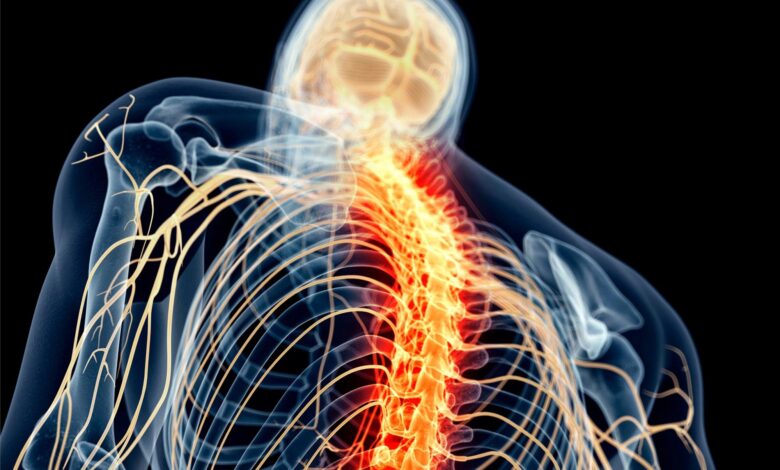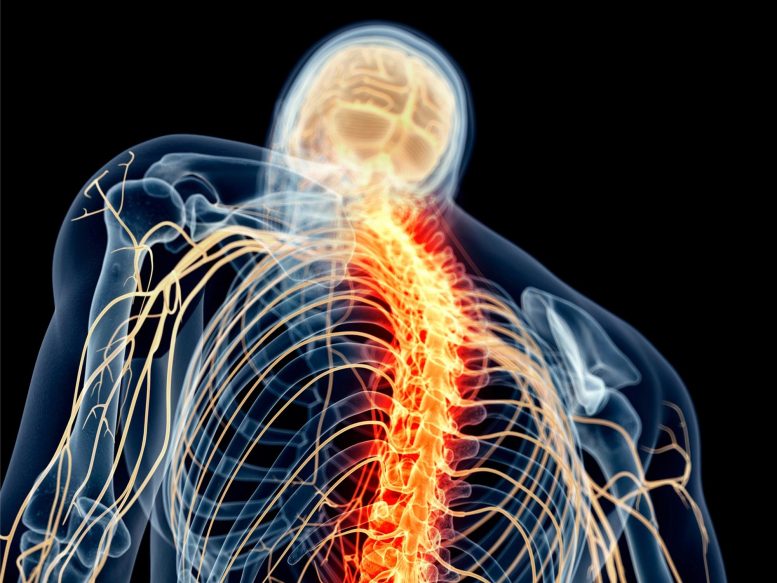Innovative Light-Controlled Drugs Could Revolutionize Neuropathic Pain Treatment


Researchers have advanced light-activated drug treatments, developing compounds that manage neuropathic pain effectively with minimal side effects, signaling a shift from traditional opioid therapies.
A team of researchers from the Institute for Bioengineering of Catalonia (IBEC) has developed light-activated derivatives of the anti-epileptic drug carbamazepine to treat neuropathic pain.
Light can be harnessed to target drugs to specific body areas using photopharmacology. This technique modifies the drug’s chemical structure by incorporating a light-sensitive molecular switch, like azobenzene. As a result, the drug becomes active only under exposure to certain light wavelengths, remaining inactive in the dark.
Based on these principles, a team of researchers led by the Institute for Bioengineering of Catalonia (IBEC) has developed photoswitchable derivatives of carbamazepine, an anti-epileptic drug widely used in medicine to combat some types of neuropathic pain, such as trigeminal neuralgia. These compounds, which have an analgesic effect when activated by light, are able to inhibit nerve signals locally and on demand. The derivatives synthesized by the researchers are activated at wavelengths corresponding to the amber color, which allows them to pass through tissue and bone using conventional halogen lamps.
Representative video clip of photocontrolled locomotion of zebrafish. Vehicle (black trace) treated animals show lower swimming activity and nearly absent photoresponses compared to intact ones. Behavioral photoresponses elicited by Carbadiazocine are observed and statistically significant, with 420 nm light increasing locomotion and 500 nm light decreasing it. Credit: Institute for Bioengineering of Catalonia (IBEC)
The two synthesized compounds, carbazopine-1, and carbadiazocine, show photopharmacological activity, allowing the activity of hippocampal neurons and the locomotion of zebrafish larvae to be reversibly controlled by light. These in vivo experiments make it possible to observe anxiety-related behaviors reflected in sudden swimming movements. IBEC researcher Luisa Camerin, the first author of the study, explains: “When we illuminate larvae that have uptaken these compounds with a certain wavelength, the drug is activated and the larvae move faster. If we change the wavelength, their movement slows down again, demonstrating the reversible effect of the compound on the nervous system.
Pain Management Innovations
Carbadiazocine has also been shown to have analgesic properties: “In rat models developed in the laboratory of Esther Berrocoso at the University of Cadiz, we have observed that carbadiazocine has an analgesic effect on neuropathic pain without any signs of anesthesia, sedation or toxicity. These results demonstrate a simple and convincing treatment with non-invasive illumination,” explains Pau Gorostiza, ICREA research professor, principal investigator at IBEC, and member of CIBER-BBN.
Neuropathic pain is caused by lesions or diseases of the somatosensory system, such as lumbar radiculopathy (“sciatica”), diabetic neuropathy, and chronic post-operative pain. The treatment of this type of pain often requires opioids, which are stronger analgesics than the usual NSAIDs – such as paracetamol and ibuprofen. However, their use is controversial due to their inconsistent efficacy, the need for high doses that can lead to tolerance and addiction, and systemic side effects such as constipation, nausea, dizziness, and drowsiness.
In this context, light-based therapies are becoming increasingly important in medicine because of their ability to target specific regions of the body, increasing treatment efficacy and reducing the side effects of systemic drugs.
The team is already working on the next step in this project, which will involve activating drugs using infrared light, which penetrates deeper into tissue, and using portable light sources such as lasers or light-emitting diodes (LEDs).
Reference: “Photoswitchable carbamazepine analogs for non-invasive neuroinhibition in vivo” by Luisa Camerin, Galyna Maleeva, Alexandre Gomila-Juaneda, Irene Suárez-Pereira, Carlo Matera, Davia Prischich, Ekin Opar, Fabio Riefolo, Esther Berrocoso and Pau Gorostiza, 18 June 2024, Angewandte Chemie International Edition.
DOI: 10.1002/anie.202403636
This study is part of the PHOTOTHERAPORT project, coordinated by the Institute for Bioengineering of Catalonia (IBEC). The project is funded by the prestigious Pathfinder Open program of the European Innovation Council (EIC) and focuses on the development of luminescent implants and light-activated drugs for innovative neuromodulation therapies (HORIZON-EIC-2023 program PATHFINDEROPEN-01, no. 101130883). PHOTOTHERAPORT is a consortium of 8 institutions from 4 countries with a budget of 3 million euros over 3 years to carry out the project.




